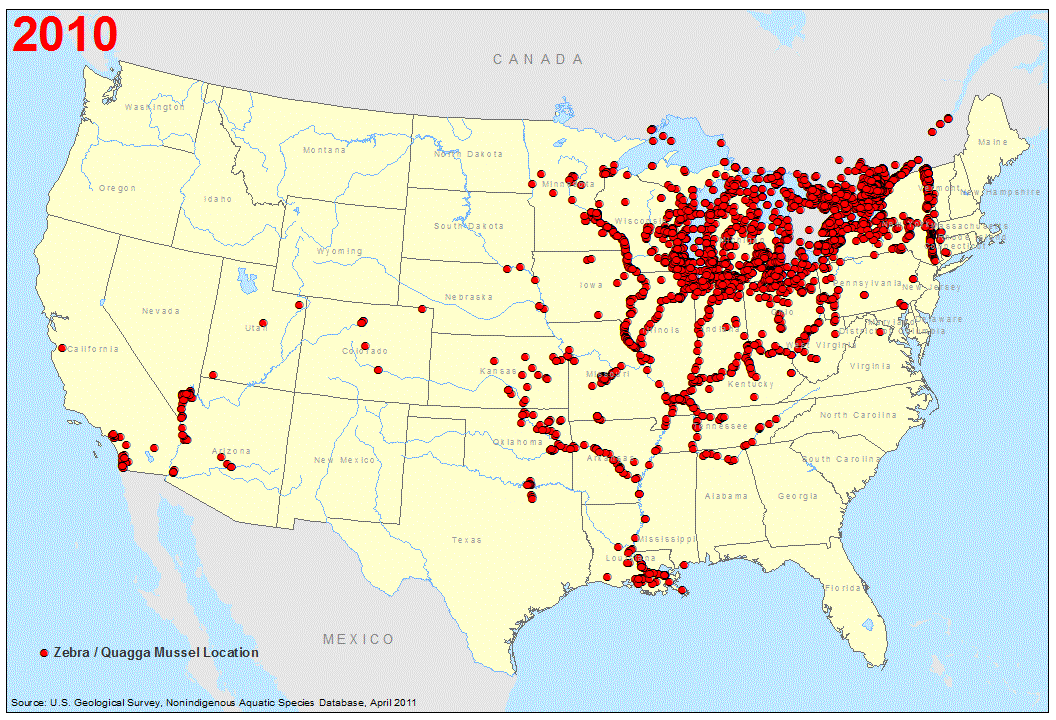Background
Zebra mussels (Dreissena polymorpha) is an aquatic shellfish that lives in still or slow-moving freshwater. Zebra mussels were originally found in the rivers and lakes that connect to the Black Sea and Caspian Sea, in eastern Europe and western Asia. They were introduced to North America accidently in late 20th and today the mussels are commonly distributed in the United states in the Great Lakes basin, most of Mississippi River drainage and The Hudson River etc. (Nalepa and Schloesser, 1993; Neumann and Jenner, 1992; U.S. Geological Survey, 2008)


Feautures & Habitats
Adult Zebra mussels are usually with 20mm-50mm length of triangular shells, flat on the ventral side and patterned brown with stripes. Zebra mussels can be found in water that is 2-12 meters deep, the maximum depth of their habitat is 60 meters. Zebra mussels are ectothermic and heterothermic. Their body temperature as the temperature of their environment changes. (Nalepa and Schloesser, 1993; U.S. Geological Survey, 2008) They can tolerate down to 6 °C in winter, the upper limit for their short-term survival is 26-33°C. In addition, Zebra mussels need at least 12°C of water temperature in order to spawn.(Borcherding 1991; Neumann et al.1993; Sprung 1993; Nichols 1996; McMahon 1996)
Features & Habitats Cont.
The ideal pH for Zebra mussels to growth is 7.4-9.4 (Sprung 1993). Similar with other shellfish, Zebra mussels are sensitive to water calcium. There is evidence shows that the mussels are mainly reported in lakes with a calcium level of 20-40mg/L and absent from lakes with less than 20mg/L. (Strayer 1991) Zebra mussel larvae can survive short periods at 18°C with oxygen at 20% of saturation (about 2 ppm) (Baker et al. 1993). Adults are reported to need 25% saturation (between about 3 and 2 ppm at 10°-25°C) (Andrew. 2008 )
